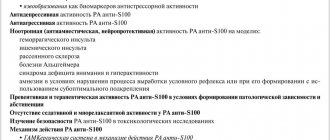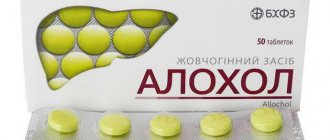Chemical properties
Sodium hypochlorite - what is it? This is an inorganic compound containing up to 95% active chlorine. The substance has several non-trivial, historical names: “labarrack water”, “javel water”. Chemical formula of sodium hypochlorite: NaOCl. Molecular weight of the compound = 74.4 grams per mole. Due to the fact that the substance is quite unstable in the free state, it is most often used in the form of a pentahydrate or an aqueous solution. The solution has a strong, pungent odor of chlorine. The anhydrous form of the substance is synthesized in the form of colorless crystals that are highly soluble in water. The pentahydrate has a yellow-green tint, and the crystals are rhombic in shape.
According to its chemical properties, it is a strong oxidizing agent. Hypochloride easily decomposes to Na chloride and oxygen ; when heated, it undergoes disproportionateation. In water it dissociates into ions. The substance corrodes most metals.
Sodium hypochlorite is produced in huge quantities. About half of the synthesized substance is used in household chemicals and medicine, the rest is used in industry. There are two methods for producing the product: chemical, chlorination of an aqueous solution of sodium hydroxide (concentrated and basic) and electrolytic, using electrolysis plants for the electrolysis of aqueous sodium chloride .
The chemical compound is actively used in industry:
- as a bleach for fabrics, wood and other products;
- for industrial and sanitary-hygienic processing of grain, pipelines, tanks in winemaking and brewing, etc.;
- in the chemical production of anthranilic acid , chloropicrin , ascorbic acid , starch , and analytical chemistry in photometry;
- for disinfection and purification of industrial wastewater and water in public water supply systems;
- in the food industry and pharmaceuticals;
- in military affairs during degassing of toxic substances.
The substance is used in household chemicals and can often be found in bleaches, disinfectants and cleaning products. In medicine, it is used externally or locally as an antiviral, bactericidal and antifungal agent; in small concentrations - for the treatment of surgical wounds, in gynecology and obstetrics, otorhinolaryngology, and dentistry ( endodontics ).
The chemical compound can have harmful effects on the human body and, if inhaled, have a suffocating and irritating effect. If the product gets into the eyes, the substance causes a chemical burn and can lead to loss of vision. The product irritates the skin and in high concentrations causes tissue death, ulcers and burns. After ingesting a 3-6% solution, a person develops acidosis , irritation of the esophagus; higher concentrations can cause perforation of the digestive tract.
Despite this, if you follow the recommendations for the use of drugs, water and household chemicals, hypochlorite is considered a fairly safe product. It is not carcinogenic, mutagenic or teratogenic. The toxic dose for intravenous administration in humans is 45 mg per kg of body weight; oral – 1 gram per kg. It is also believed that the substance does not create environmental problems, since in the environment it quickly decomposes to water, oxygen and table salt. Hazard class for concentrated solutions (up to 20%): 1 – according to chemical activity; 3 – danger to human health. Non-territories of the Russian Federation Na hypochlorite is produced according to GOST 11086-76.
Introduction
Hypochlorites are salts of hypochlorous acid HClO.
The most common ones are sodium hypochlorite, calcium hypochlorite and potassium hypochlorite. Hypochlorites are widely used for disinfection of drinking water, bleaching, degassing and disinfection. Hypochlorites are among the most important chemical compounds. Table 1. The most common hypochlorites.
| Systematic name | Traditional name | Chem. formula | CAS No. | M, g/mol |
| Sodium hypochlorite | Sodium Hypochlorite, Labarrac Water (Sodium Hypochlorite Mixed with Sodium Chloride and Sodium Hydroxide) | NaClO | 7681–52–9 | 74,44 |
| Potassium hypochlorite | Potassium hypochlorite, Javel water (potassium hypochlorite mixed with potassium bicarbonate and potassium chloride) | KClO | 7778–66–7 | 90,55 |
| Calcium hypochlorite | Calcium hypochlorite, bleach (calcium hypochlorite mixed with calcium chloride, calcium oxychloride and calcium hydroxide) | Ca(ClO)2 | 7778–54–3 | 142,98 |
Pharmacodynamics and pharmacokinetics
Sodium Hypochlorite is one of the strongest antibacterial agents. Hypochlorite ion exhibits high activity against many known microorganisms, and acts in fairly low concentrations. The highest activity occurs at neutral pH. The particles formed during the decomposition of the substance oxidize the biopolymers in the structure of harmful agents and destroy the molecules of almost all organic substances. substrates. The product is active against gram-negative bacteria, Escherichia coli, serration, Pseudomonas aeruginosa, gram-positive bacteria, pathogenic fungi, protozoa, and viruses. However, the medicine does not act on the causative agents of cryptosporidiosis and giardiasis . The product does not have teratogenic, carcinogenic or mutagenic properties.
Analysis methods
Qualitative reactions to hypochlorite ion can be:
- oxidation of iodide ion to iodine in a strongly acidic environment;
- precipitation of a brown precipitate of thallium(III) metahydroxide (TlO(OH)) under the action of an alkaline solution of thallium(I) salt;
- color reaction with 4,4´-tetramethyldiaminodephenylmethane or N,N´-dioxytriphenylmethane in the presence of potassium bromate.
The most common method for quantitative analysis of hypochlorite ion is the titrimetric method using potassium iodide. To carry out the test, an aqueous solution or aqueous suspension containing hypochlorite ion is mixed with an excess solution of potassium iodide in a sulfuric acid medium. Keep the hermetically sealed mixture for 5 minutes in a dark place. The released iodine is titrated with a standardized solution of sodium thiosulfate. A starch solution is used as an indicator near the equivalence point.
When quantitatively determining the hypochlorite ion by the indirect iodometric method, the results of the analysis are converted into those released during the reaction
2H+ + ClO– + Cl– = Cl2↑ + H2O.
An alternative method for quantifying hypochlorite ion is potentiometric analysis using a bromine ion selective electrode. The concentration of the hypochlorite ion is found by adding the test solution to a standard solution or by reducing the concentration of the test solution by adding it to the standard solution.
Indications for use
Apply externally and inject into the cavity in a concentration of 0.06%:
- for prophylaxis during operations on the chest, pleural and abdominal cavities;
- for wounds, widespread peritonitis , abscess , osteomyelitis ;
- when performing peritoneal dialysis in the abdominal cavity;
- patients with pleural empinema ( tuberculosis , pus in the pleural cavity);
- when treating the vagina before and after surgery, for colpitis , bartholinitis , trichomoniasis , endometriosis , chlamydia , adnexitis , laparoscopy , hysteroscopy , abdominal surgery;
- as a prophylactic agent and for the treatment of purulent-septic complications after cesarean section;
- after operations on the urinary tract and kidneys, after prostatectomy ;
- for purulent otitis media , pharyngitis , runny nose ;
- for the treatment of mycoses and diphtheria ;
- with true eczema and eczema of microbial etiology;
- patients with staphyloderma , streptoderma , herpes simplex and acne .
The solution is used for injection for endo- and exotoxicosis , poisoning, sepsis, burns, liver and kidney diseases.
In the form of liquid and gels, the substance is used to disinfect equipment in the food industry and when treating surfaces.
Sources
- Handbook of detergents. Part A: Properties/ Edited by Guy Broze. New York: Marcell Dekker, 1999. 809 p.
- Furman L. A. Chlorine-containing oxidizing-bleaching and disinfecting substances. M.: Chemistry, 1976. 88 p.
- Ushakova V.N. Washing and disinfection. Food industry, trade, public catering. – St. Petersburg: Profession, 2009. 288 p.
- GOST 1692–85. Lime chloride. Technical conditions.
- GOST 11086–76. Sodium hypochlorite. Technical conditions.
- Lidin R.A. and others. Constants of inorganic substances: a reference book / Ed. prof. R.A. Lidina. M.: Bustard, 2000. 480 p.
- Chemical Encyclopedia/ Ch. ed. I.L. Knunyants. M.: Soviet Encyclopedia, 1992. T. 3. 555 p.
- Harmful substances in industry. Handbook for chemists, engineers and doctors / Ed. prof. N.V. Lazarev and prof. I.D. Gadaskina. L.: Chemistry, 1977. T. 3. 608 p.
- https://ru.wikipedia.org/wiki/Sodium_hypochlorite
Drugs containing (Analogs)
Level 4 ATC code matches:
Naftalan oil
Suporon
Naftaderm
Vinylin
Hydrogen peroxide
Potassium permangantsovka
Iodoform
Pantocide
Diamond green
Ectericide
Salicylic-zinc paste
Elekasol
Salicylic-Zinc ointment
Formalin
Formagel
Aseptolin
Xeroform
Vitaon
Olazol
Formidron
The product is an active component of the drugs Amukin , Unisept . It is added to the composition of disinfectant solutions.
Sodium hypochlorite production
Global production volumes of the drug are approaching several million tons. Humanity's needs for antiseptics are constantly growing along with population growth, consumption of artificially prepared water and the general development of civilization on the planet.
The following production methods are used in industry:
- Basic process. This is a chemical route for the production of HPCN, which does not differ from the reaction discovered by Antoine Labarraque in 1820 and consists of treating sodium hydroxide with ordinary chlorine.
- Low salt process. Here, sodium hydroxide is also treated with chlorine, only it occurs in two stages, which makes it possible to obtain solutions concentrated up to 40%, which are distinguished by their purity.
- Electrolysis. This method is the familiar decomposition of a solution using current. Sea water or a solution of table salt is used as the starting material.
The most effective way to obtain commercial HPCN is the low-salt process. In Russia, this is how GOODHIM produces sodium hypochlorite.
Spectral activity of disinfectants
| № | Chemical group, drug | K1 | K2 | ||||||
| Intestinal | Drip | Respira- | Entero- | Dermato- | Spore formation | ||||
| infections | infections | torn | viral | mycoses | itching | ||||
| bakt. | bakt. | viral | infections | pathogens | |||||
| etiology | etiology | infections | |||||||
| 1. | CHLORINE ACTIVE COMPOUNDS | ||||||||
| 1. | Bleaching powder | 0,2-1,0 | 0,2-10,0 | 0,5 | 1,0-3,0 | 10 | 10,0-20,0 | 10 / 0,2 = 50 | 20 / 0,2 = 100 |
| 2. | Neutral hypochlorite | 0,5-0,6 | 0,15-0,5 | 0,15-0,3 | 0,6-0,9 | 0,3 | 1,0-7,5 | 0,9 / 0,15 = 6 | 7,5 / 0,15 = 50 |
| calcium | |||||||||
| 3. | Calcium hypochlorite | 0,1-7,0 | 0,1-7,0 | 0,5 | 1,0-7,0 | 1,5 | 3,5-8,0 | 7,0 / 0,1 = 70 | 8,0 / 0,1 = 804. |
| technical | |||||||||
| Sodium hypochlorite, | 0,125-0,25 | 0,125-0,5 | 0,125-0,25 | 0,5 | 0,3-0,5 | not active | 0,5 / 0,125 = 4 | —— | |
| received | |||||||||
| electric | |||||||||
| 5. | Chloramine | 0,05-3,0 | 0,005-5,0 | 0,5 | 1,0-3,0 | 5 | not active | 5 / 0,05 = 100 | —— |
| 6. | Na(K) salt | 0,1-0,2 | 0,1-0,5 | 0,1 | 0,1-0,3 | 0,5 | 2-5,0 | 0,5 / 0,1 = 5 | 5 / 0,1 = 50 |
| dichloroisocyanin- | |||||||||
| ric acid | |||||||||
| 7. | Chlorcin | 0,5-2,0 | 0,5-2,0 | 1 | 2,0-5,0 | 2,0-5,0 | 7,5 | 5 / 0,5 = 10 | 7,5 / 0,5 = 15 |
| 8. | Drug DP-2 | 0,1-0,2 | 0,1-1,0 | 0,5 | 0,1-0,5 | 0,3-0,5 | 3,0-7,5 | 1 / 0,1 = 10 | 7,5 / 0,1 = 75 |
| 9. | Sulfochloranthine | 0,1-0,2 | 0,1-2,5 | 0,1 | 0,1-0,2 | 1 | not active | 2,5 / 0,1 = 25 | —— |
| 2. | PEROXIDE COMPOUNDS | ||||||||
| 10. | Perhydrol (Hydrogen Peroxide) | 3 | 3 | 2 | 3,0-4,0 | 2,0-4,0 | 3,0-6,0 | 4,0 / 2,0 = 2 | 6,0 / 2,0 =3 |
| 11. | Dezoxon (peracetic acid) | 1,0-2,0 | 1,0-2,0 | 2 | 1,0-2,0 | 1,0-2,0 | 20 | 2,0 / 1,0 = 2 | 20,0 / 1,0 = 20 |
| 12. | Grylene (H2O + H) | 0,25-2,5 | 0,25-2,5 | 1,0-2,0 | 2,0-3,0 | 1 | 3,0-6,0 | 3,0 / 0,25 = 12 | 6,0 / 0,25 = 24 |
| 3. | SURFACTANTS | ||||||||
| 13. | Ampholan | 0,5-2,0 | 0,5-2,0 | not active | 2,0 / 0,5 = 4 | —— | |||
| 14. | Nirtan | 1,5-3,0 | 1,5-3,0 | not active | 3,0 / 1,5 = 2 | —— | |||
| 4. | OTHER | ||||||||
| 15. | Gibitan | 0,5 | 0,5 | not active | 0,5 / 0,5 = 1 | —— | |||
| 16. | Polysept | 1 | 1 | not active | 1,0 / 1,0 = 1 | —— | |||





